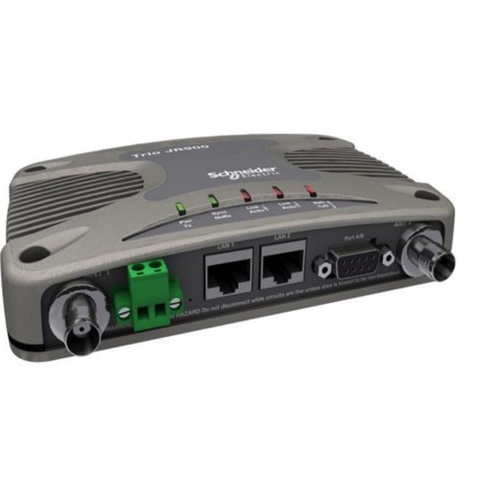SCADAPack TRIO Radios

SCADAPack TRIO Radios are a line of wireless communication radios designed for use in industrial control and automation applications. These radios use spread spectrum technology to provide reliable, long-range wireless communication in challenging environments, such as those found in the oil and gas, water and wastewater, and power generation industries.
One of the key features of SCADAPack TRIO Radios is their ability to provide secure, real-time communication between remote sites and central control systems. They operate on licensed and unlicensed frequencies, depending on the application requirements, and are available in both point-to-point and point-to-multipoint configurations.
SCADAPack TRIO Radios are designed to be easy to install and configure, with a user-friendly interface that allows for quick and simple setup. They are also highly scalable, allowing for easy expansion of the wireless network as needed.
More Information about SCADAPack Trio Radios
SCADAPack TRIO Radios offer a range of advanced features that help to ensure optimal performance and security. These features include:
- Advanced encryption algorithms that provide secure communication and prevent unauthorized access to the network.
- Advanced diagnostics and monitoring capabilities that allow for real-time monitoring of radio performance and network health.
- A variety of mounting options, including wall-mount, pole-mount, and DIN-rail mount, to provide maximum flexibility in installation.
- Advanced power management features that help to conserve battery life and reduce energy consumption.
SCADAPack TRIO Radios are available in a range of frequencies and power outputs to suit different application needs. They are also certified to meet various industry standards, including FCC, CE, and RoHS, which ensures their quality and safety for use in different applications.
Serial vs Ethernet Radios
There are many different communication protocols that can be used when selecting a radio. The type of protocol being used may depend on the application, time frame the hardware was installed, existing hardware that is already in place and many other factors. What is important to understand is that most of these protocols fall into two generic families: Serial-based protocols or Ethernet-based protocols. Examples of Serial-based protocols include: Modbus RTU, RS-232, RS-485 and Profibus. Examples of Ethernet-based protocols include: Modbus TCP, Ethernet IP and Profinet. The differences that exist in these protocols has a lot to do with data transmission speeds.
Serial-based protocols have a much more limited data transmission capacity compared to Ethernet-based protocols, however, they do not require a connection strength as strong as Ethernet-based protocols. This is beneficial in situations where the radio connection may be limited because of physical obstructions or long distances. Ethernet-based protocols have faster data transmission capabilities and are becoming much more common than Serial-based protocols. By understanding the differences between these two types of protocols, you will be better equipped to select the radio that will work best for your specific application.

